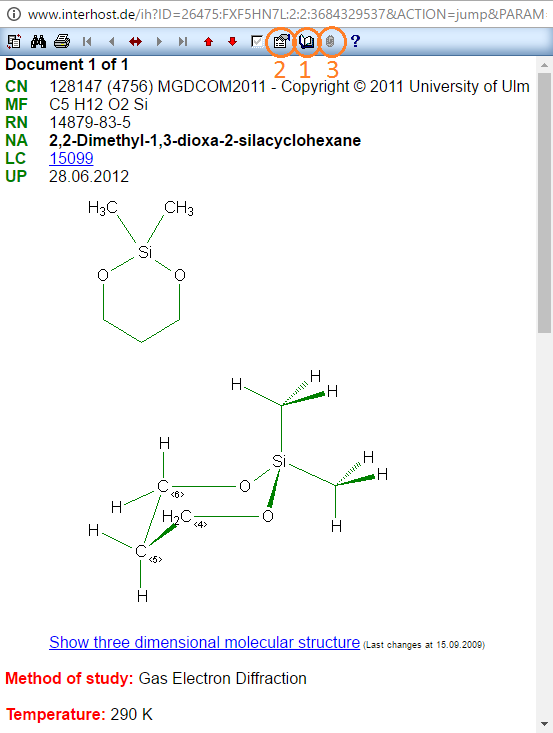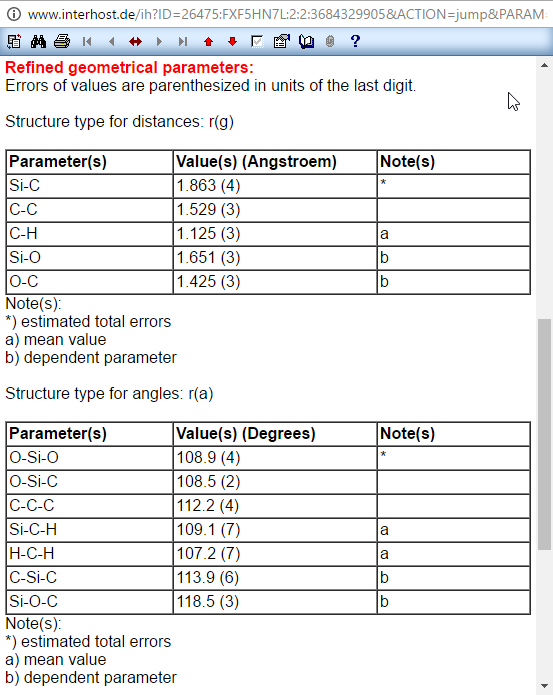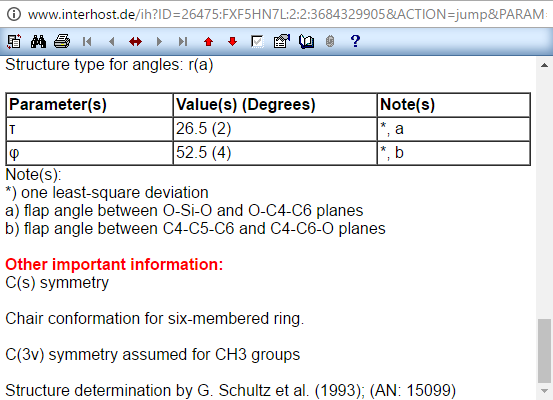Single Compound Documents
After clicking a hyperlink in the compound hitlist the selected document is displayed in more details. One example of an extensive compound display with numerical data is given below.
In the beginning of each compound document the identification data (such as compound and Chemical Abstracts Registry numbers, sum formula in Hill system, and chemical name and synonyms) are displayed:

The locator (LC) informs that the numerical data below are taken from the MGDLIT document AN=15099. This compound entry was modified last time on June 28, 2012.
The link "Show three dimensional molecular structure" leads to a 3D viewer which helps you to visualize the molecule three-dimensionally.
The numerical data, which were obtained by gas electron diffraction at 290 K, are quoted in the next two screen shots. In the lower part of the screen shot above a stereo drawing is also given which defines the position of internuclear distances and bond and dihedral angles, which are listed in the tables in the next two screen shots.

Because in electron diffraction the internuclear distances and bond and dihedral angles are often given in different structure types (with different physical meaning) the definitions are always given in front of the corresponding tables.

Below the tables other relevant information (such as assumptions on molecular point groups, parameters etc. or additional experimental data), which do not fit into the other fields, is listed. At the bottom a cross reference to the bibliographic file MGDLIT (see also information under the locator LC) is given.
Crossfiling to MGDLIT (getting the ten most recent bibliographic references) is very easy. After clicking the book icon ("Literature Crossover", [1]) a new window will be opened.
Moreover user-defined formats can be chosen by clicking the icon [2] ("User defined Format") and user-defined comments (in analogy to MGDLIT) are available via the paper-clip icon ("Note", [3]).
Back: Compound Hitlists (review of hits)
Next: Statistical Visualization of Compound Information
